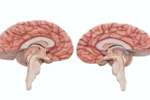In today’s busy world, it’s easy to ignore pain for a little while. You may feel pain that extends from the shoulder, through the arm, and into the hand, but perhaps don’t have time to make an appointment, thinking the pain will go away on its own. This specific type of pain may be the result of cervical radiculopathy, more commonly known as a “pinched nerve.” In order for a pinched nerve to recover, it does require care and treatment, but the good news is, most cases of cervical radiculopathy respond well to non-invasive treatment, so you don’t have to go on living in pain.
A Spinal Injury
While your pain may feel as if it manifests in the shoulder, cervical radiculopathy is actually a spinal injury. In your spine are 24 separate bones, known as vertebrae. Between these bones are intervertebral disks, which primarily act as shock absorbers as you walk to prevent bone damage. As we age, these disks simply receive a hefty amount of wear and tear, and you may have a bulging disk as the result of arthritis, or other age-related problems. Cervical radiculopathy commonly occurs as the result of a herniated disk, which compresses down on a nerve but can also occur from bone overgrowth or soft tissue enlargement. Any of these instances put pressure on the nerve roots, which in turn causes the pain. This form of “pinched nerve” is not limited to only age-related problems; a younger person can also experience the injury due to sports-related trauma or an accident.
Symptoms and Treatment of Cervical Radiculopathy
Pain is, of course, the number one symptom as it relates to cervical radiculopathy. But there may be other telltale signs to watch out for to report to your doctor. This condition is also associated with tingling or the feeling of “pins and needles” in the hand or arm, loss of sensation in these extremities, or muscle weakness in the shoulder, arm, or hand.
The pain itself is described as burning and sharp–not particularly a “radiating” type of pain. Some patients report if they place their arms above their head, they feel temporary relief. (This raising of the arms relieves pressure on the nerve).
If you suspect a pinched nerve, it’s wise to have it evaluated by a NS2 specialist. After discussing your symptoms and medical history, your doctor will perform a physical exam to try to determine which nerve root may be affected. Diagnostic tests offer a more accurate evaluation, and X-ray or magnetic resonance imaging (MRI) are likely to be performed. Electromyography (EMG) is also an option. This diagnostic test measures electrical impulses in the muscles. It is used to diagnose cervical radiculopathy as it can survey if a nerve is performing normally. An EMG is also useful as it can be used to rule out other diseases or conditions.
Treatment and Care
Cervical radiculopathy responds well to several different forms of treatment, including physical therapy, rest, nonsteroidal anti-inflammatory drugs (NSAIDs), or oral corticosteroids. Steroid injections are also an option. If a patient is experiencing excruciating pain as a result of their pinched nerve, pharmacotherapy is also a consideration. Surgery for cervical radiculopathy is not unheard of, however, it is never a first-line treatment as non-invasive, non-surgical procedures are so effective. NewSouth NeuroSpine can help through every step from diagnosis to treatment. Our qualified surgeons and physicians offer a full battery of diagnostic tests in our office, as well as years of experience in treating this condition.
If you are suffering from pain in the upper extremities or think you may be experiencing cervical radiculopathy, make an appointment at NewSouth NeuroSpine today for diagnosis and treatment.






